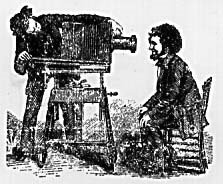1. Maus, by Art Spiegelman is a story about Art's father, Vladek, who survives the Holocaust. The story starts in the beginning of WWII, and continues on until the end of the war. Vladek's struggles during the war are described by his son. Everything from having to hide himslef and his wife, Anja, in bunkers to escape the Germans, to actually being prisoners in Aushwitz. During the book, Vladek tells his story to his son, yet at the same time we are shown the troubled relationship Art has with his father because of the war. Maus shows not only how WWII affected Vladek during the war, but also how it continued to affect him the rest of his life, especially his relationships with people.
2.
Identity
Gender
Race
Religion
Mental illness/Effects after War
Father/ son relationships
mother/son relationships
Class separation
3. The characters in the novel are presented as animals. The animals seem to have a hierarchy consistent with the nations/religions of the time. The Germans are cats and the Jews are mice. During this time the Germans deinitely were more powerful than the jews and did trap them just like cats trap mice. They kept them confined to small towns and did not let them no what was going on until it was too late and they were in the concentration camps. Also, once in the camps, they were trapped everywhere they went and would eventually be killed. The Americans were represented as dogs. The US won the war and did defeat the Germans, so it would only be appropriate that they would be dogs, since obviously dogs eat cats. This kind of hierarchy is shown across all nations/religions.
Also, the cartoons are all shown in black and white. When the father is telling his story, in the beginning of each part, they show him and his son. This way we see the interaction between Art and Vladek, and can see how their relationship has been affected. Once Vladek is deep into his story, the cartoons then switch to images of the past. These images give us a better understanding of the kind of things he went through and how he felt. Art goes out of his way to point out certain things. These things are usually separate images from the line of the story. Art likes to put important things in boxes separate from the other images. He does this alot with drawings of places, such as bunkers or camps. These are important images because otherwise these places would be very hard to describe with just words. Art also tries to draw the reader in by putting signs in separate boxes as well. Signs that were posted or letters that were sent are shown separate so that the reader is reading them, the same as Vladek would have.
Lastly, there is narraration at the top of most of the images, which is coming from Vladek as he decribes the events to his son, or Art as he describes his father. The author also shows dialogue between people in the images, giving the reader more insight on how it was during the time. Doing this makes the story more complete and easier to follow especially since we are constantly going between present day, with Vladek and his son, to the past and the war.
announcements
This blog was created by and for students in an Introduction to Cultural Studies class at the University of Washington. Through an investigation of urban experience and representation--in theory, in graphic novels and in our own "readings" of Seattle's University District--we considered the formation and history of cultural studies as an (anti)discipline, with a special emphasis on the questions, "What does cultural studies do, and how do you do cultural studies?"
If you'd like to know more about the class, the blog or our U-District artifact project, please contact Gabrielle Dean: gnodean@u.washington.edu.
If you'd like to know more about the class, the blog or our U-District artifact project, please contact Gabrielle Dean: gnodean@u.washington.edu.
Friday, May 9, 2008
Subscribe to:
Post Comments (Atom)
blog archive
-
▼
2008
(92)
-
▼
May
(26)
- Seattle U District: City Artifacts Map
- City Artifacts: What and Where?
- Researching History and its Representations...
- Palestine
- Persepolis 1 & 2
- Shutterbug Follies
- A Scanner Darkly
- Maus I & II
- A Scanner Darkly
- Maus I & II
- Shutterbug Follies
- Persepolis 1 and 2
- Postcards: True Stories that Never Happened
- Maus I & II
- Postcards: True Stories that Never Happened
- Persepolis 1 & 2
- Mail Order Bride
- Mail Order Bride: Mark Kalesniko
- Persepolis 1 & 2
- Shutterbug Follies
- Maus I and II
- Palestine
- Postcards: True Stories That Never Happened
- PALESTINE
- Postcards: True Stores That Never Happened
- Shutterbug Follies
-
▼
May
(26)

1 comment:
Your characterizations of the animal hierarchies in the novel are interesting, and it seems to me that the group is all pretty much on the same page when it comes to Art Spiegelman's animal symbolism. Nice plot synopsis and list of main themes.
Post a Comment